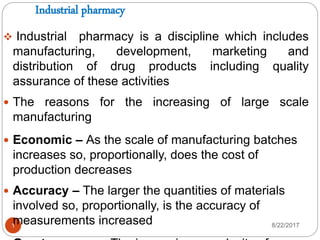Industrial pharmacy encompasses the manufacturing, development, marketing, and distribution of drug products, focusing on quality assurance. The document details fundamental unit operations, fluid flow mechanisms, heat transfer modalities, and mass transfer processes relevant to pharmaceutical manufacturing. It highlights drying techniques, including conventional methods and advanced technologies, along with their advantages and disadvantages in the context of maintaining product efficacy.
































































































